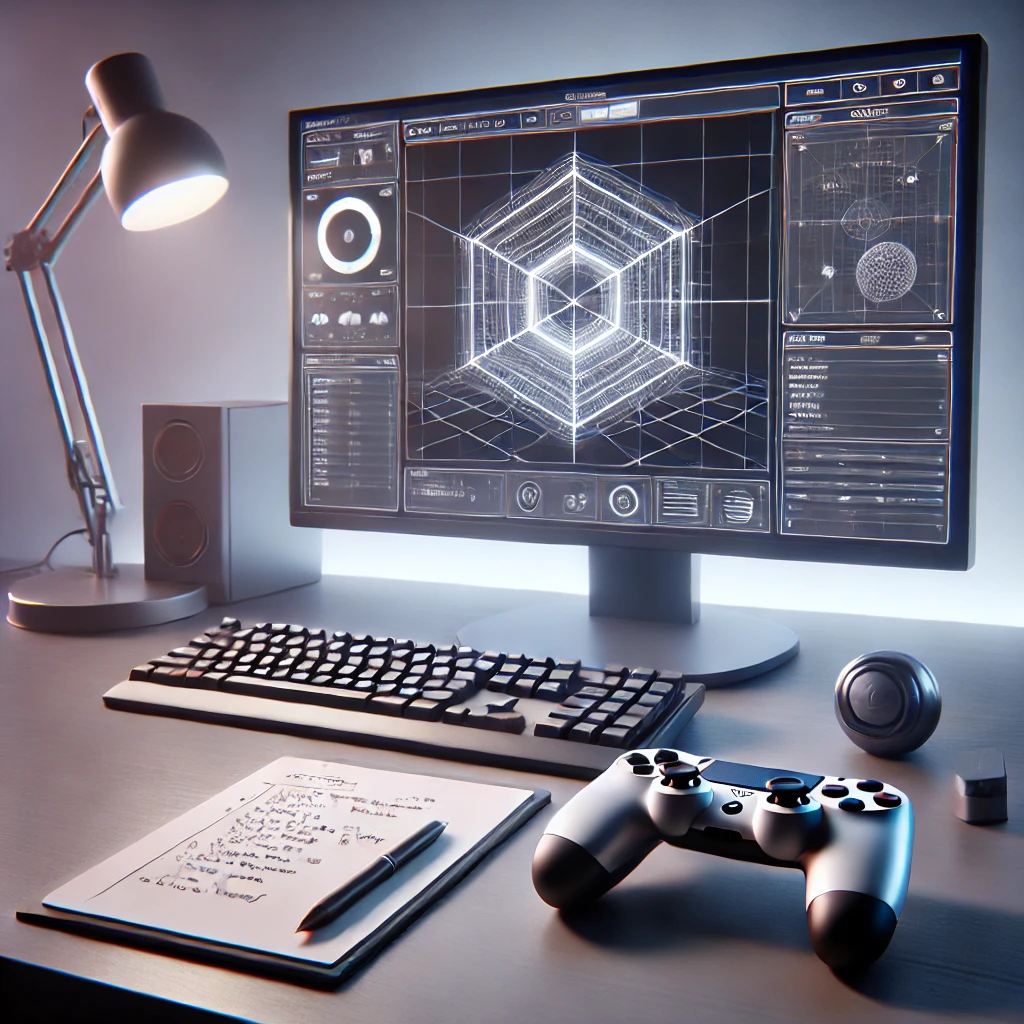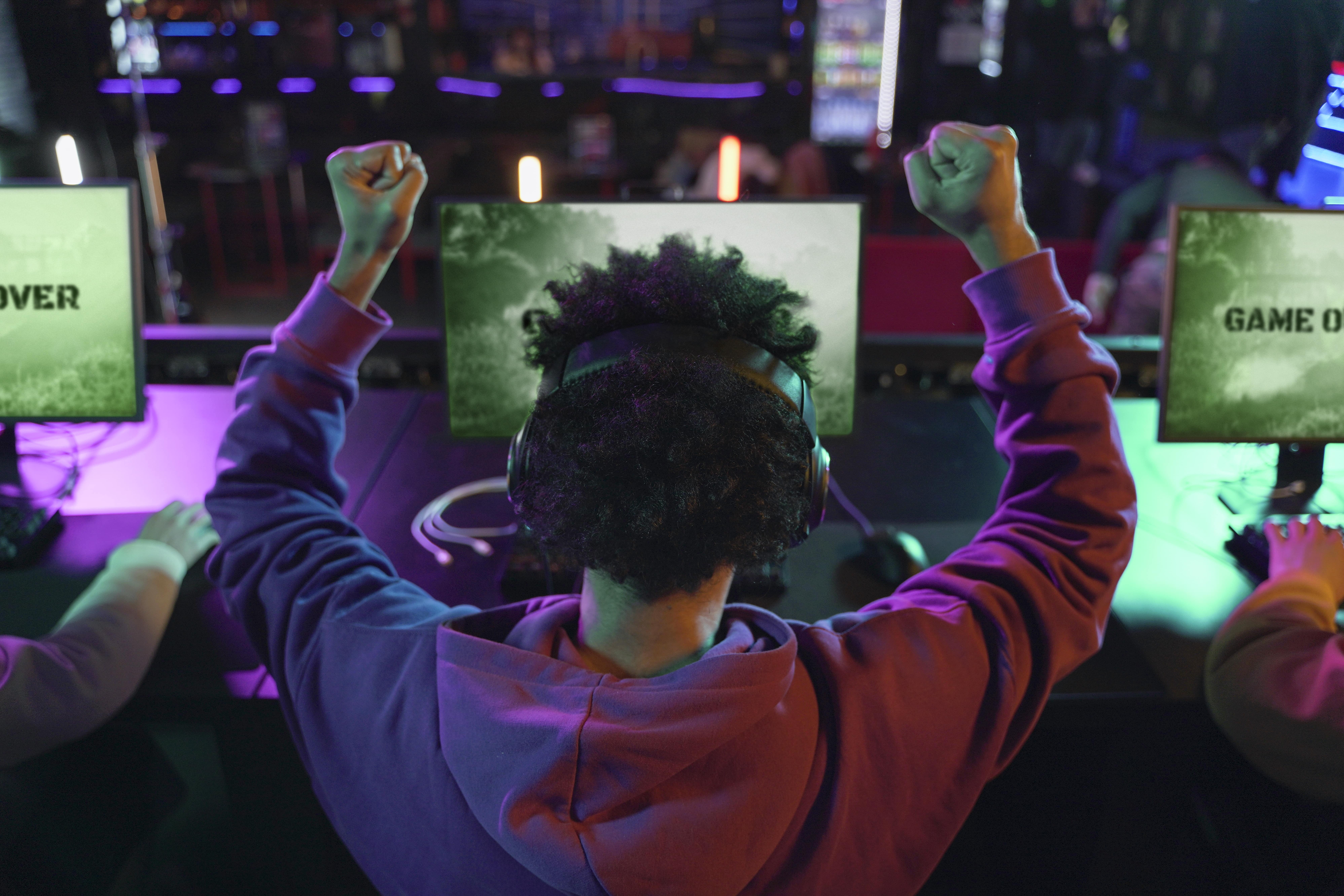
Exploring the Game Engine World: A Comprehensive Guide to Choosing the Right Tool
Gamemaking has grown a lot since it started. These days, you can find all kinds of games, from big-budget AAA titles that look like real life to basic phone games. A key factor in this evolution is the game engine. A game engine is a powerful piece of software that provides the foundation for developing video games. They handle things like making graphics, controlling how objects move, responding to player actions, and artificial intelligence (AI). Let’s look at the different game engines out there, what they can do, and how to pick the best one for your game.
What is a Game Engine?
At its core, a game engine is software that helps people make video games. It comes with ready-to-use tools and systems, so developers don’t have to build everything from the ground up. These tools include things like physics systems, AI libraries, graphics processing, and other features needed to create games.
Game engines come in different types, and each one is better for certain kinds of games. When choosing a game engine, developers think about where the game will be played, how it should look, how much money they can spend, and what skills their team has.
Types of Game Engines
1. 3D Game Engines
3D game engines help create virtual worlds by handling tasks like showing 3D objects, making things move naturally, controlling where players look, and creating realistic lighting. These tools make it easier to build engaging and lifelike games.
Key Features of 3D Game Engines:
- Real-time 3D Rendering: Real-time 3D rendering is the process of generating and displaying three-dimensional graphics instantly, allowing for interactive experiences. Commonly used in video games, simulations, and virtual reality, it relies on powerful graphics hardware to produce visuals that respond to user inputs without noticeable delay, enhancing immersion and engagement.
- Physics and Collision Detection: 3D engines typically come with built-in physics systems that handle realistic movement and object behavior automatically, including how things fall and bump into each other.
- Advanced Lighting and Shading: Many 3D engines create realistic worlds by adding moving lights, shadows, and special coloring effects.
Popular 3D Game Engines:
- Unreal Engine: Known for its photorealistic output and advanced features, Unreal Engine is often used in AAA games. It is especially popular for its powerful visual scripting system (Blueprints), making it accessible for both programmers and artists.
- Unity: Unity is a popular 3D engine known for its flexibility. It can create both 2D and 3D games and supports various platforms, including consoles, PCs, and mobile devices.
- CryEngine: Developed by Crytek, this engine is well-known for its impressive visual features, particularly its ability to create realistic environments and high-quality graphics.
2. 2D Game Engines
Although 3D engines are widely used in the AAA gaming industry, many indie developers prefer 2D game engines for simpler, more traditional games. These 2D engines specialize in creating two-dimensional graphics. While they tend to be less complex than 3D engines, they still offer powerful features for developers.
Key Features of 2D Game Engines:
- Tile-based Environments: 2D engines have systems for making grid-based maps, like tilemaps. These maps work well for platformers and puzzle games.
- Sprite Animation: 2D engines enable frame-based sprite animation. This is crucial for character movements, object interactions, and special effects.
- Simple Physics and Collisions: 2D engines have simpler physics systems. They focus on basic movement, gravity, and collision detection.
Popular 2D Game Engines:
- GameMaker Studio 2: GameMaker Studio is a well-known tool for making 2D games, especially for independent developers. It helps create games quickly with its easy-to-use design and drag-and-drop options. It also allows skilled developers to use advanced coding.
- Construct: Construct is a strong tool for making 2D games without needing to write any code. It’s great for beginners and for people who want to quickly try out their ideas.
- Cocos2d: This free framework is mainly used to make 2D mobile games. It works on different platforms and provides a flexible space for creating both easy and complicated 2D games.
3. Cross-Platform Game Engines
Cross-platform game engines help developers make games that can work on different devices without needing to change the code for each one. They are very helpful for making mobile games that need to run on both iOS and Android, or for games that should be available on PCs, consoles, and web browsers. You can read about cross-platform play in more detail here: Cross-Platform Play: Lifting Us to New Possibilities
Key Features of Cross-Platform Game Engines:
- Multi-Platform Support: These engines let developers write one set of code that works on different platforms, saving time and resources.
- Cloud-based Collaboration: Some cross-platform engines provide cloud support, allowing teams to work together easily from different places.
- Performance Optimization: Cross-platform engines are made to improve how well a game works on different devices, making sure it runs well on devices with different hardware.
Popular Cross-Platform Game Engines:
- Unity: Unity is a flexible tool that works on more than 25 platforms, like consoles, PCs, mobile devices, and VR. Its ability to work across different platforms makes it a great option for developers who want to reach many people.
- Cocos2d: Cocos2d is mainly a 2D game engine that works on both mobile and desktop, making it a good choice for making games for different platforms.
- Godot: Godot is a free game engine that helps you make both 2D and 3D games. You can use it on different types of devices. More people are liking it because it is flexible and has a growing community.
4. Open-Source Game Engines
Open-source game engines are free to use and change, making them a good choice for independent developers and hobbyists. They usually have helpful guides, active communities, and many plugins to add more features.
Key Features of Open-Source Game Engines:
- Free and Modifiable: You can download open-source engines for free, and developers can change the code to meet their needs.
- Large Community Support: Open-source engines usually have active user groups that share guides, add-ons, and other help for developers.
- Customizability: Because the source code is open, developers can change the engine to fit the needs of their project.
Popular Open-Source Game Engines:
- Godot: Godot is a popular free game engine that is easy to use. It allows you to make both 2D and 3D games and is regularly updated by its users.
- MonoGame: MonoGame is a well-known free tool for making 2D games. It helps developers create games for different systems using C#.
- PICO-8: PICO-8 is a fun console for making and playing small games. It is a free tool that helps you create old-school-style games with limits that inspire creative ideas.

5. Custom Game Engines
Some big game development studios make their game engines to fit the specific needs of their games. These custom engines are made from scratch and designed just for that game or series. Although making a custom engine can take a lot of time and resources, it allows for more control and flexibility to improve the development process.
Key Features of Custom Game Engines:
- Tailored to Specific Games: Custom engines are made for the specific needs of a game, which allows for special features and improvements that regular engines cannot offer.
- Full Control: Developers can fully manage how the engine works and how well it performs, so they can make changes at any point during development.
- Long-Term Support: Studios create custom engines used in multiple projects to ensure long-term support and optimization for future games.
Examples of Custom Game Engines:
- Frostbite: Frostbite, made by DICE, is used in many EA Sports and Battlefield games. It is famous for its great graphics, breakable environments, and lots of customization options.
- RE Engine: Capcom’s RE Engine is used to make games like Resident Evil 7 and Devil May Cry 5. It is known for being efficient and creating high-quality graphics.
Choosing the Right Game Engine
The decision on which game engine to use depends on several factors, including the type of game being developed, the target platform, and the development team’s expertise. Here are a few considerations when choosing a game engine:
- Game Type: Your game can be 2D or 3D. For 3D games, Unreal Engine or Unity are good choices. For 2D games, GameMaker or Construct might work better.
- Platform: Mobile development can use cross-platform engines like Unity and Cocos2d. For console development, Unreal Engine and Unity also support many platforms.
- Skillset: New developers might like engines like Construct or GameMaker because they need little coding. Experienced programmers might prefer engines like Unreal or Godot for more customization.
- Budget: Some game engines are free, while others require licensing fees. Open-source engines like Godot and Cocos2d are free, while Unity and Unreal have revenue-based pricing structures.
Conclusion
Game engines are crucial for game development. They help create 2D mobile games or complex 3D titles. Knowing the types of game engines available helps developers choose the best one for their project. Whether you’re a beginner or an experienced developer, there’s a game engine for you.


